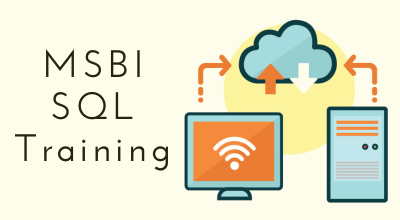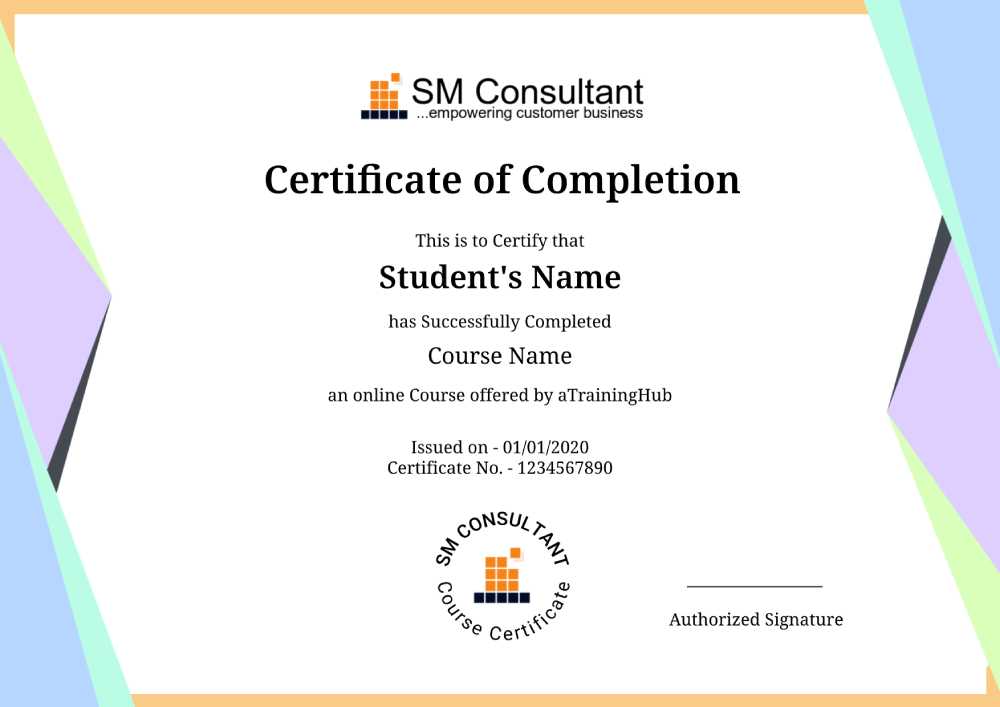MSBI, SQL Training
Learn MSBI, SQL Training to Unleash a Modern Career
Average Rating 4.7 From 973 Students

About Course
MSBI, SQL Training at SAM consultant will let you gain proficiency in Microsoft Business Intelligence. You will work on real-world industry projects pertaining to the three components of MSBI viz. SSIS for ETL, SSAS for analysis, SSRS for reporting, data mining queries, Visual Studio, SQL Server, OLAP, generating Cubes, data sources, converting raw data into business insights. This is an industry-designed Combo Training Course that includes the Microsoft Business Intelligence tool and its components like SSRS, SSIS, and SSAS that use the SQL Server. This training will provide you with full proficiency in working with MSBI, ETL tasks, analytics, data integration and reporting.
Reasons to choose SM Consultant
 Mock
MockInterviews
 Focused
FocusedLearning
 Practical
PracticalTraining
 Easy
EasyPayments
 Lifetime
LifetimeAccess
 Expert
ExpertTrainers
 Shareable
ShareableCertificate
 Flexible
FlexibleTimings
Upcoming Batch Schedule for MSBI, SQL Training
No Timing Suitable for You ?
Tell Us Your Preferred Starting Date, we will schedule a batch for You!
Take MSBI, SQL Training at your own pace
Self Paced Online Learning
The Self Paced format allows you to stream the course content from anywhere across the globe with a good Internet connection. There is no defined schedule, you can watch them at your comfortable time. Get Started.
Watch Free MSBI, SQL Training videos before signing up.
Instructor Led Live Training
We deliver Instructor-led online course via your personal computer through an easy-to-use web conferencing tool that allows for real-time interaction between you and the trainer. Get Expert guidance tailored for you.
Join Free MSBI, SQL Training demo session before signing up.
MSBI, SQL Training Course Content
1. MSBI SSIS
- ETL Overview
- Working with Connection Managers
- Data Transformations
- Advance Data Transformation
- Slowly Changing Dimensions
- Overview of Fuzzy Look-up Transformation and Lookup and Term Extraction
- Concepts of Logging & Configuration
2. MSBI SSRS
- Introduction to SSRS
- Matrix and Tablix Overview
- Parameters and Expression
- Reports and Charts creation
- Dashboard Building
- Reports and Authenticity
3. MSBI SSAS
- Getting started with SSAS
- Structures and Processes
- Type of Database Relationship
- SSAS Cube
- Cube: Operations & Limitations
- Cube and In-memory Analytics
- Data Source View
- Dimensions
- Measures & Features of Cube
- Measures and Features of Cube Cont.
- Working with MDX
- Functions of MDX
- DAX language
- BI Semantic Model
- Plan and deploy SSAS
- Analyzing Big Data with Microsoft R
4. SQL SERVER DATABASE DESIGN
- SQL Database Architecture - Logical and Physical View
- Database Properties - Files - Types - Storage Options
- Data Files : Purpose and Sizing. Detailed Architecture
- Filegroups : Purpose and Grouping Options. Properties
- Log files : Sizing, Placement & Detailed Architecture
- Pages, Extents (Uniform, Mixed). Data Allocation Process
- Write Ahead Log (WAL) and Log Sequence Number (LSN)
- Virtual Log File (VLF) and MINI LSN. Operation Audits
- Database Creation using GUI - Adding Files, Filegroups
- Database File and Filegroup Options. GUI Limitations
- Database Creation using T-SQL Scripts. SYNTAX Rules
- Database with Filegrowth, Autogrowth, MAXSIZE Options
- mdf, ndf, ldf and Custom Extensions. Dynamic Extensions
- Planning and Designing Very Large Databases (VLDB)
- CHAR versus VARCHAR Differences - Type, Size Allocations
5. SQL BASICS - DDL, DML, SELECT
- Basic SQL for Beginners. Introducing Databases, Tables
- What is SQL? Why T-SQL? Basic SQL Queries in SSMS
- DDL and DML Statements - Creating & Using Databases
- Table Creation (Basic Level) - Columns and Data Types
- Issues with Digital Data into Characters. Missing Values
- INSERT / Store Data into SQL Server Tables - Options
- Single Row and Multiple Row Inserts with NULL Values
- SELECT Queries and Basic Operators : IN, BETWEEN
- IS, UNION, UNION ALL, Other Basic SQL Operators
- UPDATE Statements with / without Conditions. SET
- DELETE Statements with Conditions. Logging Options
- TRUNCATE Statement - DELETE Comparisons, Logging
- SYSTEM DATABASES - Purpose and Importance. Resource
- CLIENT - SERVER Architecture (TDS) & Client Statistics
6. VIEWS - FUNCTIONS & QUERIES
- Views on Tables - Stored SELECT Statements, Data Access
- SCHEMABINDING and ENCRYPTION Options - Advantages
- Cascaded Views and WITH CHECK OPTION, Advantages
- Orphan Views - Scenarios and Realworld Solutions
- Common System Views For Metadata Access, Object IDs
- Functions: Types, Purpose and Usage. Return Values
- Scalar Value and Inline Table Value Functions
- Multi-Line Table Value Returning Functions - Usage
- Table Variables and Parameters in SQL Server. Usage
- ROLLUP and CUBE - Sub Totals, Grand Totals, Aggregates
- ROLLUP of Table Data. Column Aggregations. ORDER BY
- CUBE on Table Data - Purpose & Usage. Permutations
- Queries with GROUPING() Option in SELECT, Using HAVING
- HAVING versus WHERE Conditions - Usage Differences
7. TABLE DESIGN & QUERIES
- Table Design - Creation. Columns - Data Types, Length
- Routing Tables to Database File Groups, Advantages
- Schemas - Purpose, Creation and Usage with Tables
- Table Design using T-SQL Scripts - Syntax, Examples
- Data Types, Length, NULLs and Naming Conventions
- UNION, UNION ALL Operators. Differences, Row Order
- CREATE, ALTER, DROP -- INSERT, UPDATE, DELETE
- SELECT Queries with Schema on Tables, Column Aliases
- T-SQL Data Types and NULL Values. Computed Columns
- Comparing DELETE and TRUNCATE - TLog Files
- T-SQL Operators: IN, BETWEEN, IS, AND, OR, EXISTS
- Default Schema and Default Filegroup for Table Design
- Basic Sub Queries - SELECT, MIN/ MAX. Column Aliases
- Temporary Tables : Purpose and Types. Local and Global
- Synonyms : Purpose. Alternate Object Reference, Queries
8. TRANSACTIONS & TRIGGERS
- Need for Transactions, Transaction Scenarios
- ACID Properties and Transaction Types. Atomic Property
- EXPLICIT, IMPLICIT Transactions - Query Blocking
- IMPLICIT Transactions - Usage, Database Settings
- AUTOCOMMIT Transactions - Advantages, Examples
- OPEN Transactions and Audits. OPENTRAN commands
- Nested Transactions and COMMIT / ROLLBACK Rules
- SavePoint Options with Explicit Transactions, Rollbacks
- LOCK HINTS : READPAST, NOLOCK, HOLDLOCK - Usage
- Triggers - Purpose and Types. Scope Of Usage
- DML Triggers - Events, Types and Practical Usage
- FOR / AFTER Triggers and INSTEAD OF Triggers
- INSERTED & DELETED Memory Tables with DML Triggers
- Triggers for DML Operation Audits and Data Sampling
- Database Triggers and Server Level Triggers
9. CONSTRAINTS and KEYS
- Constraints and Keys - Ensuring Table Data Integrity
- Normal Forms - Types, Relational Database (RDB) Design
- OLTP Database Model & BCNF - Relations with PK / UQ
- NULL, NOT NULL and Default Nullability for Columns
- UNIQUE KEY Constraints: Importance, Uniqueness, Nulls
- PRIMARY KEY Constraint: Properties, Priority, Limitations
- FOREIGN KEY Constraint: References, Relations & Usage
- CHECK Constraints: Properties, Conditions and Usage
- DEFAULT Constraints: Properties, Usage and Limitations
- Relations with Tables across Multiple Schemas, Usage
- Identity Property with / without PRIMARY KEY, Usage
- Naming Conventions For Constraints, Columns and Tables
- Normal Forms - Types, Purpose and Usage. With Examples
- BCNF: Boycee-Codd Normal Form and Practical Usage
10. INDEXES and QUERY TUNING OPTIONS
- Indexes: Architecture (Page Level), Purpose and Types
- Clustered Indexes - Architecture, Fragmentation Issues
- Non Clustered Indexes - Architecture, Column References
- Execution Plans and Query Optimization (QO) Techniques
- Execution Plan - Table Scan, Index Scan and Index Seek
- INCLUDED INDEXES - Index Seeks, Query Tuning
- COLUMNSTORE Indexes - Advantages, Usage Examples
- FILTERED Indexes & Online Indexes
- Materialized Views / Indexed Views - Tuning Options
- Query Optimizer (QO) Options for Index Pages, Data Pages
- Limitations of Indexes - Impact on DML and SELECT
- Primary Key Index, Composite Indexes and Precautions
- RID and Index Key Concepts. Index Page - Data Page Arch"
- Real-world Considerations For Indexes (Tables, Views)
11. JOINS, SUB QUERIES & NESTED QUERIES
- JOINS - Purpose and Types, Use Case Scenarios
- JOIN - Types, Queries and Importance of Reports
- CROSS JOIN in detail. Examples and Conditions @ WHERE
- INNER JOIN in detail. Examples with WHERE and ON
- Comparing INNER JOIN with CROSS JOIN for Conditions
- OUTER JOINS in detail. LEFT, RIGHT and FULL Joins
- SELF JOINS with INNER / OUTER Joins. Usage Scenarios
- Working with Self Joins on non key columns, advantages
- JOINS with more than 2 tables. Syntax, Precedence Order
- Query Optimization Considerations with Schema References
- Deciding the best Join Type, Order and Query Options
- JOIN Queries with Options and UNION, UNION ALL Operators
- Basic Sub Queries and Joins. Alternate Syntax & Queries
- Using ON and WHERE for Join Conditions. Working with NULLs
- Using SubQueries for Self Joins and Outer Joins
- Working with Nested Queries and Nested Sub Queries
- Using Sub Queries and Nested Sub Queries with Outer Joins
- End User Access to SQL Databases - Reporting Tools, Options
- A Real-world Case Study understanding Joins & Queries
12. STORED PROCEDURES - LEVEL 2
- Stored Procedures for Sub Queries, Dynamic Queries
- Using NCHAR and NVARCHAR in Stored Procedures
- Variables and Parameters in Stored Procedures
- Using Stored Procedures with Database Tables
- Using Stored Procedures with Views and System Viewss
- Metatada Access and Compilation Options
- Important System Stored Procedures and Usage
- Sp_help, Sp_helpdb, sp_pkeys, sp_helptext
- Sp_recompile, sp_rename, sp_renamedb
- User Defined Procedures with System SPs
- Using Extended Stored Procedures - Usage
- Recursion of Stored Procedures and Practical Usage
- Stored Procedures for Dynamic Values, sysname data
- Unicode Data and OUTPUT Parameters with SProcs
13. SQL SERVER ARCHITECTURE
- Client - Server Architecture of SQL Server
- SQL Server Tools - Connection Options, TDS Packets
- Protocols : TCP / IP, Named Pipes, Shared Memory
- SQL Native Client (SNAC) and OLE DB Drivers / Providers
- ISO - OSI Model of Data Connections, Encrypted Data
- Query Processing and Query Optimizer (QO) Components
- SQL Server Architecture For Database Engine, LCM Options
- Architecture - Query Processor and Storage Engine
- Architecture - Query Parser, Optimizer, Mini LSN, MDAC
- Architecture - SQL Engine, SQL Manager and Query Buffers
- Architecture - Write Ahead Log (WAL), Lazy Writer Threads
- Architecture - SQLOS Threads and Task Schedulers, CLR
- SQL Database Architecture - RAID Levels (S/W, H/W)
- Log Sequence Numbers (LSN) and Time Mapping. Audits
- Log File Architecture - Virtual Log Files and Usage
- Log File Architecture - Mini LSN & Degree Of Parallelism
- DB Catalogs, CLR Integration and MDAC Components
- LSN Timestamps and MINILSN. Background Threads @ SQL
Need Customized Course Content?
We will customize the MSBI, SQL Training course content according to your job requirements.
Certification
Once you are successfully through the project, you will be awarded an SM Consultant’s MSBI, SQL Training Completion Certificate for the course.
SM Consultant’s certification has industry recognition, and we are the preferred training partner for many organizations.
 SM Consultant’s Certificate Holders work at 100s of companies
SM Consultant’s Certificate Holders work at 100s of companies
Frequently Asked Questions About MSBI, SQL Training
1. When will I receive my joining instructions for MSBI, SQL Training?
Joining instructions for MSBI, SQL Training is sent two days prior to the course start date, or immediately if the booking is confirmed within this timeframe.
2. How are you better than the other classes? Past achievements?
As they say, “History speaks for itself”, the past achievements would give you a good picture of our reputation, and would also tell you what extra efforts we put in to achieve it.
3. Do you offer a MSBI, SQL Training Demo or Trial class before joining?
We offer 1 demo classes to students. Just make sure that you select the subject and time of the class so that you get an independent assessment of the quality of teaching and you can take an informed decision.
4. What’s the batch size? Will I get personal attention?
An average batch size could be min. 4-5 and max. 8-10 but irrespective of the batch size you will get personal attention and our trainers will help you understand the technology.
5. What if I am not able to attend or miss a session?
If you are unable to attend your session we will help you understand the session by sharing the recording of the live session and still if you need more assistance, we will arrange a backup session for you.
6. Can I access the MSBI, SQL Training course material after training?
Yes, you will get the material in pdf format and will have access to the MSBI, SQL Training recordings.
Have More Questions?
Do let us know if you need more information we will be happy to help you!









